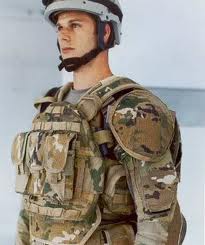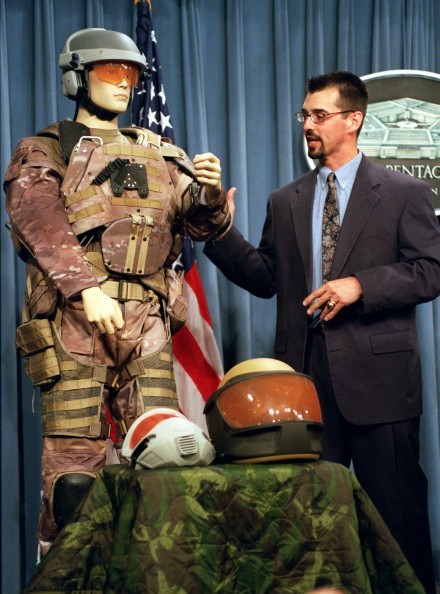 We have learned a bit more about the withdrawn Army pattern from the Camouflage Improvement Effort. Considering several indicators as well as sources of information we believe with a high degree of confidence that the withdrawn pattern is Scorpion. If this is true then it makes complete sense to withdraw the pattern. As it is, there is already OCP (MultiCam) being used as the transitional baseline pattern as well as a Crye Precision finalist family of patterns that are by all accounts, based on the successful MultiCam pattern but featuring individual patterns with specific environmental coloration. So, there will be plenty of MultiCam to go around.
We have learned a bit more about the withdrawn Army pattern from the Camouflage Improvement Effort. Considering several indicators as well as sources of information we believe with a high degree of confidence that the withdrawn pattern is Scorpion. If this is true then it makes complete sense to withdraw the pattern. As it is, there is already OCP (MultiCam) being used as the transitional baseline pattern as well as a Crye Precision finalist family of patterns that are by all accounts, based on the successful MultiCam pattern but featuring individual patterns with specific environmental coloration. So, there will be plenty of MultiCam to go around.
As you can see from this photo, the pattern is in the MultiCam family but really more of an ancestor. Scorpion was developed by Crye Precision under contract for the Army’s Objective Force Warrior Program starting in the early 00s. As the Army transitioned the program it dropped the Scorpion pattern and Crye independently refined the pattern and began to slowly market it as MultiCam. Specialized military units saw promise in the pattern and began to use it. Simultaneously, it was picked up by the tactical industry and offered commercially making it easier for small unit adoption. This increased use of MultiCam by military forces is a truly successful case of grassroots marketing and by the late-00s it was being worn by both American as well as Allied SOF. Over the past two years it has been selected for use by the US Army and Air Force for use in Afghanistan as well as by the UK and Australian military in national variant forms.
Natick kept the Scorpion pattern in their vaults and would occasionally trot it out for experimentation and development including competitive testing. Since it was independently developed by the Army over the past decade the current version is going to be a bit different than Crye Precision’s MultiCam. Apparently, Scorpion was chosen by the Natick as their sole entry for the Army Camouflage Improvement Effort after the decision was made to go with four commercial families of patterns and one Government derived family rather than the original three and two. That tells us that someone has a lot of confidence in the design.
Tags: Crye Precision, Scorpion



This is really starting to border on bizarre now… They didn’t realize that Scorpion looks too much like MultiCam BEFORE they put it in the race?
Since when has Gordon Freeman worked for the Pentagon?
don´t do this, woodland, then ACU then Multicam!
MC was always my favorite!
I concur with the above. Multicam is already so widely-spread in its use with the Army that they should just do themselves a favor of saving budget money and go with it. It’s here, it’s there, it’s commercial and it’s effective. WTF more do they want? To be Marines?
Someone is trying to justify their star. Waste and abuse again. Adopt multicam, admit all involed with ARPAT adoption was wrong and move forward.
Something tells me that if they could get Multicam without all of the licensing this would be a done deal. Problem is that they sat on their hands too long and Crye built on their own the one thing the Army can use as a reward for relaxing or not collecting on royalties: a pattern that everyone wants and that they can then license elsewhere. Crye already has that. Crye has everything and more than the Army could ever offer them. I’m sure Crye would love Multicam to be picked, but it’s not killing them in the meantime if it’s not…
Speaking of the Scorpion Trials, whatever happened to the “Desert All-Over-Brush” pattern? By all accounts, it seemed to have performed well, yet quietly disappeared after the trials. (http://en.wikipedia.org/wiki/U.S._Army_universal_camouflage_trials)
Good question – and shame we don’t have better pictures of it.
Excellent question. Considering that Desert all over brush appears to have performed the best of the patterns tested, one would have expected it to be selected as it bestows an advantage on the wearer that is absentbfrom the other patterns tested.
The rationale for camo is not to look different from the Marines. It is to minimize detection by the enemy. It therefore seems to me that any decision to select anything other than the best pattern is more about saving money than saving the lives of the soldiers who will have to wear it.
If Desert all over brush was the best pattern, why isn’t it being rolled out. What has happened to it and to the company that produces it? Also, given the apparent effectiveness of A-TACS and it’s recent release of the FG variant, why has the Army persevered with Universal camo. From what I can see, about the only place where UC appears to be effective is on a building site during a concrete pour. Everywhere else it seems to stick out like a sore thumb. Is this just another case of money over matter, where the safety and welfare of the soldier comes a distant second to the financial interests of those who will never put their lives on the line.